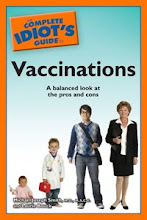A recent study found that about half of U.S. health care expenses are incurred by just five percent of U.S. patients. These 2009 figures were just released in a data brief by the nonprofit National Institute for Health Care Management Research Foundation. The data brief found that the U.S. spent an average of $8,086 per person on health care in 2009, almost twice the $4,166 per-capita cost in 1997. Ranked by expense, the top 5% of patients (civilian and non-institutionalized) cost a mean of $35,820 per year, and the top 1% of patients cost $76,476 per year in 2009, according to the brief.
Who are these high-cost patients, the five percent? The brief stated that they tend to be 55 or older and have at least one chronic condition. (I've read elsewhere that patients with chronic conditions consume 75% of the health care budget.). Many of them have hypertension, high cholesterol, or diabetes. Increasing obesity rates are driving the increase in many costly chronic conditions.
Other factors are also driving up health care costs. These factors include costly new medical technologies, the increased use of defensive medicine to avoid malpractice suits, and economic incentives such as fee-for-service payments that discourage adequate management of chronic conditions, according to the brief.
The brief did not have any suggestions about how to curb health care expenses. Clearly, the rate of chronic conditions in the U.S. is one of the roots of the problem (although other reforms are also needed in the health care system). But the time and energy it takes for an individual to prevent or adequately manage a chronic condition are at odds with our culture, which rewards unhealthy workaholism and weakens the community ties that can foster healthy choices.
Subscribe to:
Post Comments (Atom)




No comments:
Post a Comment